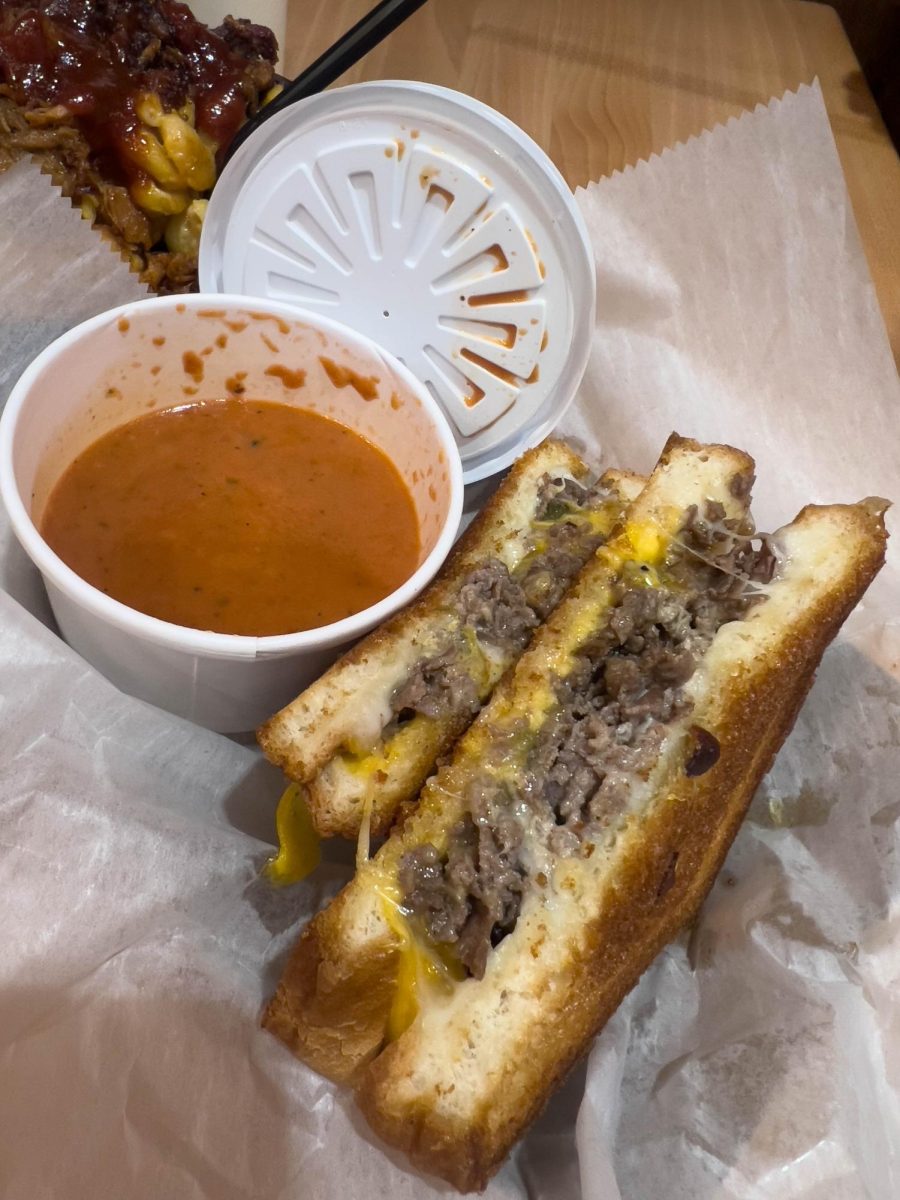
All photos by Shayna Mendez
The Fix is a student-run fine art magazine. On Wednesday, Oct. 28, The Fix celebrated the release of its third official magazine titled “The Conflict Issue.”
After releasing the first two issues of their magazine, The Fix co-editors Sean Eaton and Hannah Harley decided it was time for a more controversial challenge.
“We were pretty careful with the first [two issues],” Harley, Point Park senior photography major, said. “We’re getting our hands dirty now.”
The Fix released “The Conflict Issue” on Wednesday, Oct. 28, during a launch party. This issue will be the third installment of the magazine.
“The Conflict Issue” focuses on photographs and essays that present their own interpretation of covering conflict.
“Conflict isn’t just war photography. It is conflict with domestic violence or redevelopment,” Harley said. “We’re talking about photography in conflict and individuals in conflict.”
The Fix started in January 2015 after Ryan Maine, a senior photography major, approached Harley during winter break and pitched the idea of publishing a magazine from students in the photography and photojournalism departments.
“He said, ‘this is my idea’ and we assembled a crew of photo people,” Harley said.
The students published “The Portrait Issue” and “The Thesis Issue” in Mar. and Apr. of 2015, respectively.
Issues of “The Conflict Issue” are available to read in the University Center library, the photography lab in Academic Hall and in the School of Communication department in Thayer Hall. Copies are available for purchase on the website Blurb.
The staff on The Fix was inspired to create an issue centered on conflict photography after taking Jessica Steigerwald Toro’s course on conflict photography in the summer of 2015, according to Harley and Eaton.
One article that challenges the methods of mass media’s coverage of conflict is Hannah Altman’s essay “Humanism”. The piece features photographs that Altman took during her time in Israel, focusing on individuals in an attempt to strip away the labels of good vs. evil. Altman has previously had her work featured in the Pittsburgh Post-Gazette, Cosmopolitan magazine and Vanity Fair.
Another article centered around conflict hit closer to home in Pittsburgh. Dane Hager’s “Teenie Harris’ Lost Hill District” looks back at the work of legendary Pittsburgh photographer Teenie Harris and his work capturing the development of the Hill District in the 1960s.
“He photographed the vibrancy of the area and what happened afterwards, with the closing of the Crawford Grill,” Harley said.
The Crawford Grill was a renowned jazz club in the Hill District in the 1950s and 60s.
Now that redevelopment is underway again in the same area, The Fix searched to draw parallels between the time periods through art.
“We had photographers go out to the Hill District [to take photographs] in the style of Teenie Harris to show the political conflict that has gone on with the redevelopment there,” Harley said.
Eaton, a junior photography major, and Harley both said how they relished the challenge that the new issue put forth for the staff.
“The last two issues have been pretty straightforward. They’ve shown pretty standard work. We’re dealing with deeper topics and I think that is important for the magazine moving forward, to delve into things that are a little more controversial,” Harley said. “We have really emotional, moving pieces. These are pieces that matter.”
If readers find this issue controversial, Eaton and Harley warn it is a prelude to their next release, “The Experimental Issue.”
“I think it has prepared us because our next issue is going to be pretty edgy,” Eaton said.
“We weren’t sure about how controversial we were willing to get, but we push a little more each issue,” Harley said.
“The Conflict Issue” release came with a new set of features to the magazine, too. Along with the issue itself, The Fix will be launching their website within the next two weeks and they have opened accounts across social media platforms Facebook, Instagram, Tumblr and Twitter.
“Having an online presence helps promote the magazine,” said Sophia Loughry, The Fix’s social media director and senior multimedia major.
Maine built the website and believes that it can enhance the magazine in multiple ways.
“I hope in the future we start getting multimedia submissions,” Maine said.
He thinks the website would also help the content contributors.
“We can link directly to artist and staff websites. Content that we can’t publish in the magazine can be featured on the site,” Maine said. “It will allow people who can’t afford the issue to view the content.”
At the launch party for “The Conflict Issue” Eaton and Harley announced a juried show at the Mine Factory, one of the largest art galleries in the Pittsburgh area, on Jan. 25. The show will be open to submissions from any Point Park student and will focus on conceptual series. Pieces selected to the show will be chosen by guest curators from the Warhol Museum and the Silver Eye Center, which, according to Harley, is, “internationally recognized as a fantastic organization that does great work with photography.”
“This will be a really cool chance for Point Park students to have representation, to have a gallery show before their senior year,” Harley said. “Having people at this show will be great. They can come in and see students’ work, get a copy of The Fix, take it home and look at our art.”

Dan Winters (left) and Matt Nemeth (right), both photography majors, socialize at The Fix release party on Wednesday, Oct. 28.

Gracey Evans and Chris Salazar, both freshman photography majors, take a “selfie” with the new issue of The Fix at the release party on Wednesday, Oct. 28.

Students enjoy refreshments during The Fix launch party.










